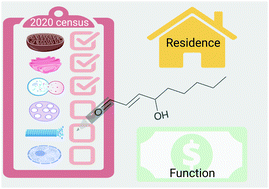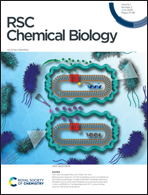Neighborhood watch: tools for defining locale-dependent subproteomes and their contextual signaling activities
Abstract
Transient associations between numerous organelles—e.g., the endoplasmic reticulum and the mitochondria—forge highly-coordinated, particular environments essential for cross-compartment information flow. Our perspective summarizes chemical–biology tools that have enabled identifying proteins present within these itinerant communities against the bulk proteome, even when a particular protein's presence is fleeting/substoichiometric. However, proteins resident at these ephemeral junctions also experience transitory changes to their interactomes, small-molecule signalomes, and, importantly, functions. Thus, a thorough census of sub-organellar communities necessitates functionally probing context-dependent signaling properties of individual protein-players. Our perspective accordingly further discusses how repurposing of existing tools could allow us to glean a functional understanding of protein-specific signaling activities altered as a result of organelles pulling together. Collectively, our perspective strives to usher new chemical–biology techniques that could, in turn, open doors to modulate functions of specific subproteomes/organellar junctions underlying the nuanced regulatory subsystem broadly termed as contactology.

- This article is part of the themed collections: Exploring proteins and their interactions and International Open Access Week 2020


 Please wait while we load your content...
Please wait while we load your content...